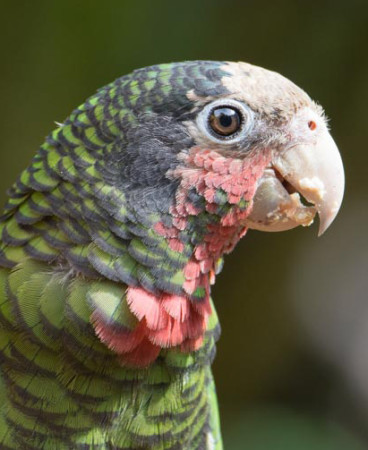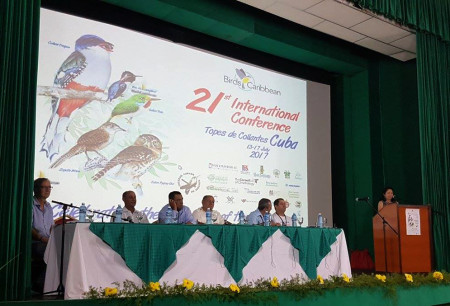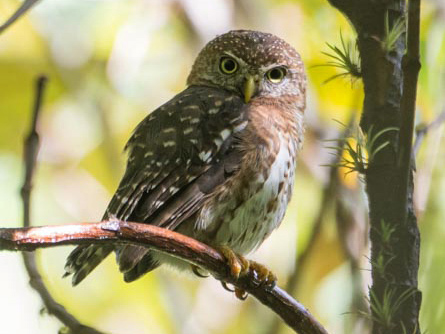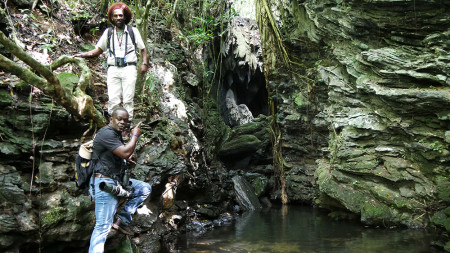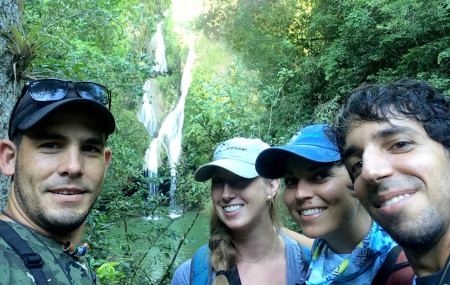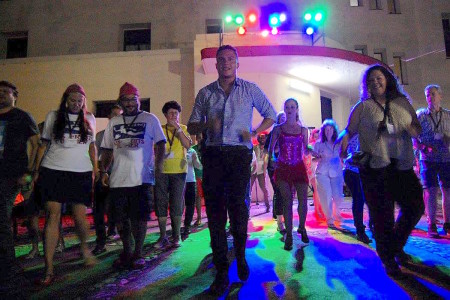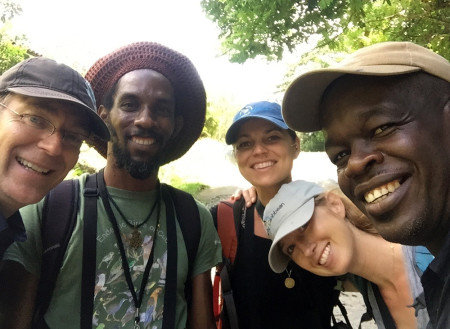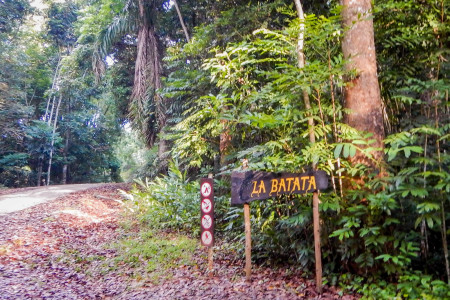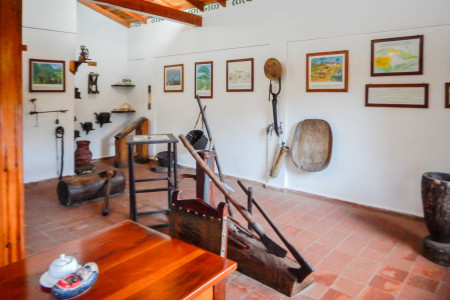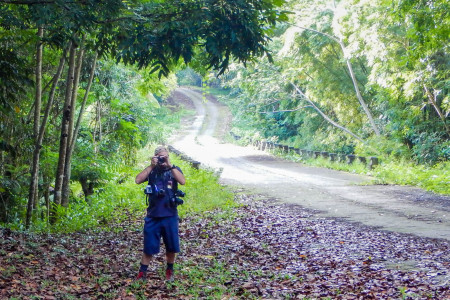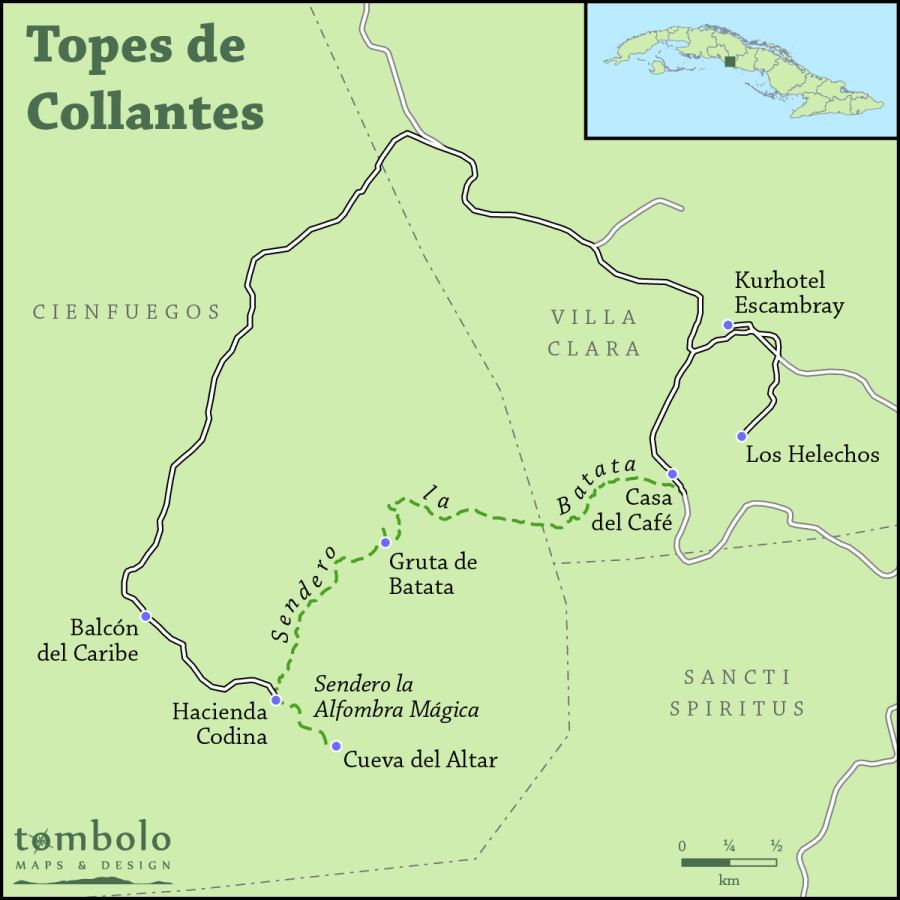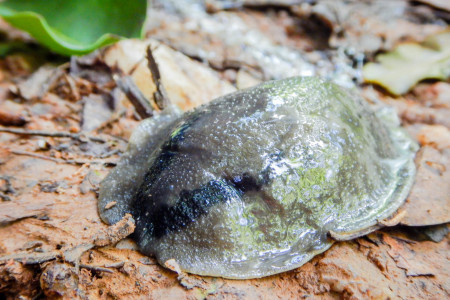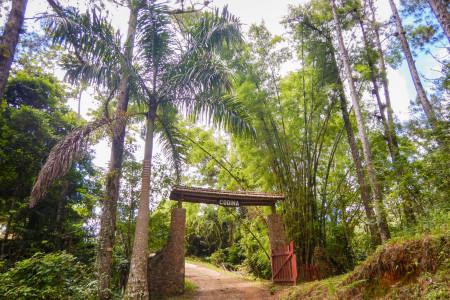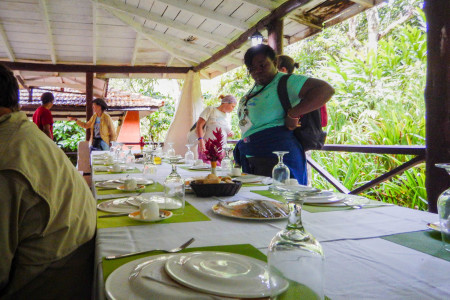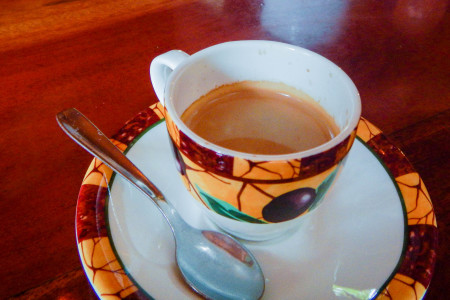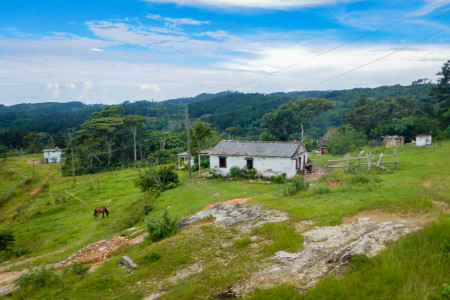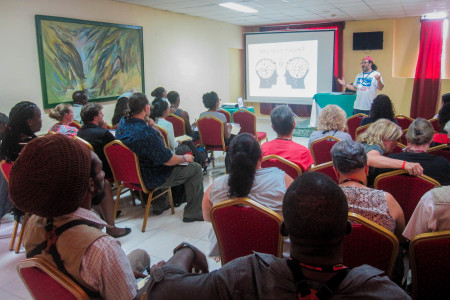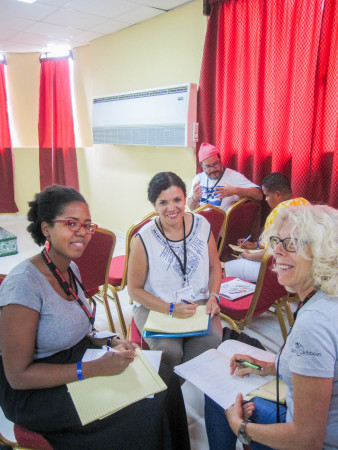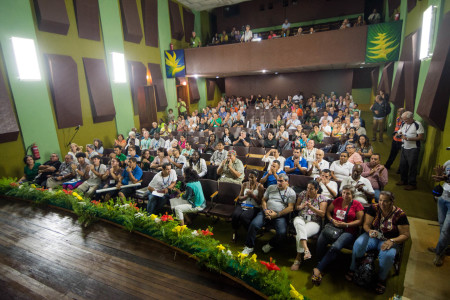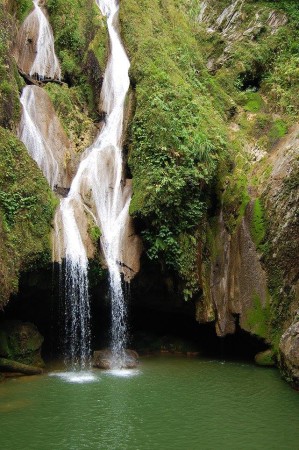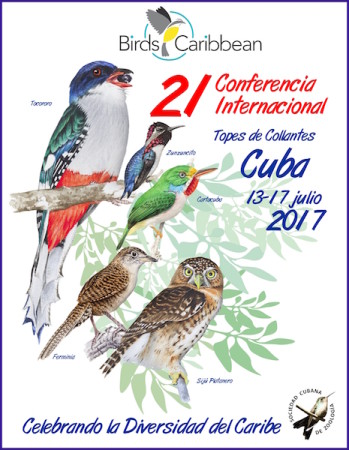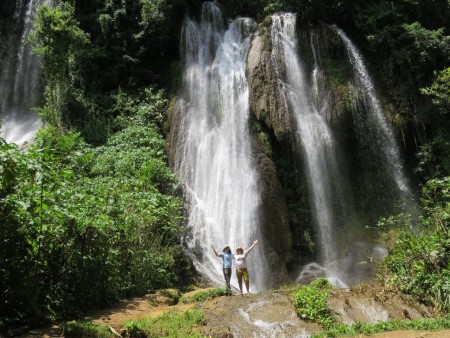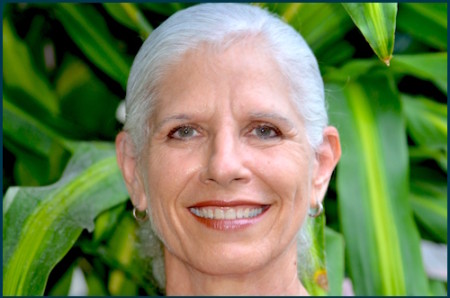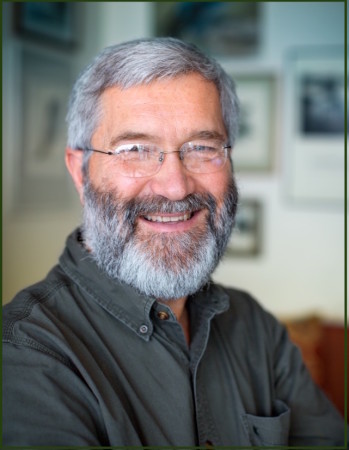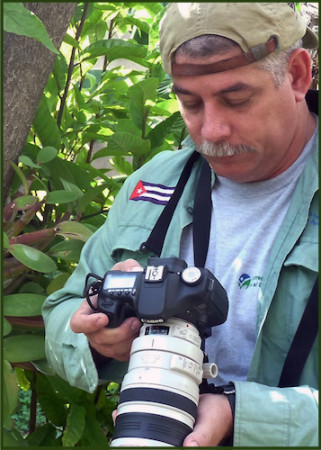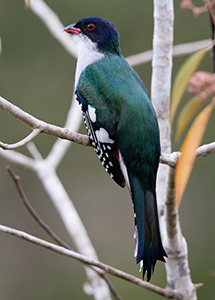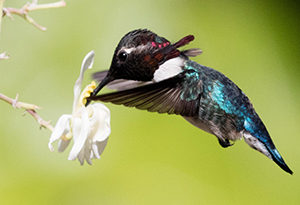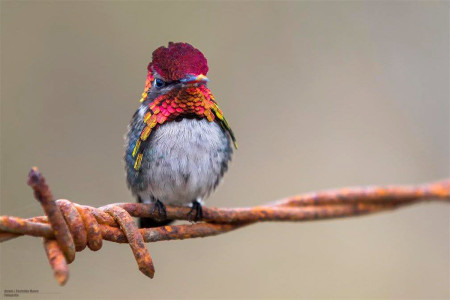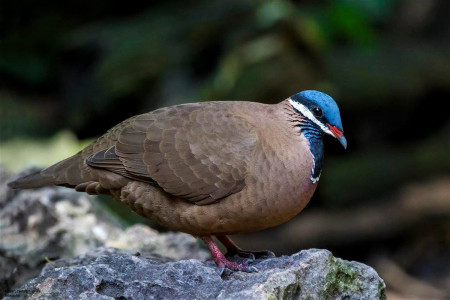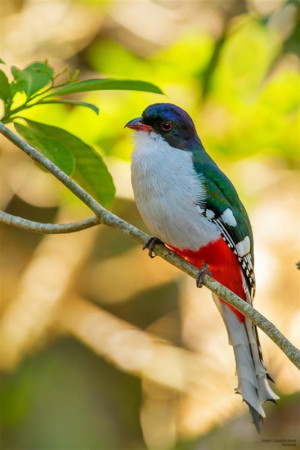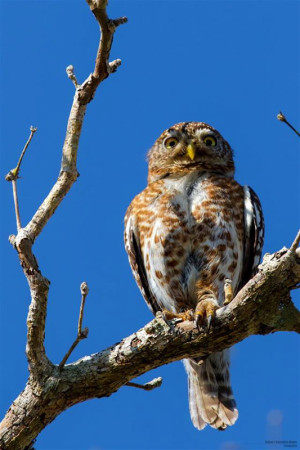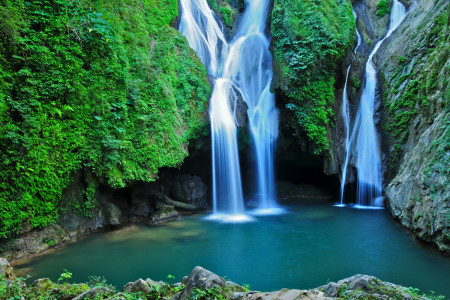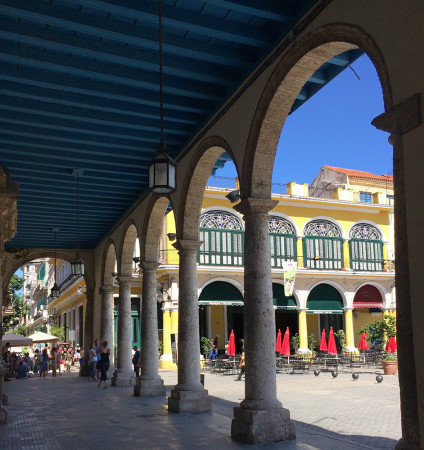
Seventeen strangers from three countries, Bahamas, Bermuda, and the United States, became fast friends on the BirdsCaribbean 4-day Pre-conference Tour. Naturalists, biologists, students, professors, teachers, accountants, business owners and managers, and retirees all shared one common interest – to explore Cuba and see the birds of Cuba and the Caribbean.
We were met at the airport on Saturday July 8th, settled in to the elegant Meliá Cohiba, and given our freedom for the first evening in Havana to stroll the Malecón and to explore the sights and sounds of Cuba. We were told that walking anywhere, anytime in Cuba was safe, and our experiences verified this truth. On Sunday morning, Atila, our Cuban tour guide, started us off with a walking tour of Old Havana. Ambling along while learning history, seeing colonial architecture, street musicians, and cobbled streets busy with tourists and locals alike made for a lovely morning. Lunch was to the accompaniment of music – music everywhere.
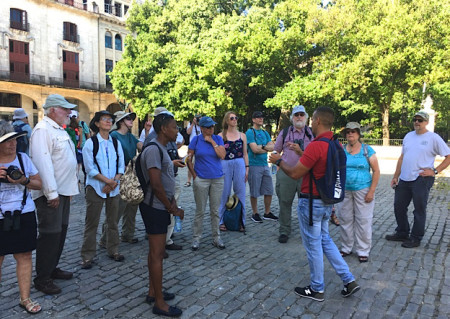
Between observations around our hotel and our tour of the City we saw the first of our Cuban endemics – the Cuban Blackbird. After lunch, the group piled in to taxis for a walk through the National Botanical Gardens about 30 minutes outside of Havana. There we spotted 13 different species including the Red-legged Honeycreeper, the Great Lizard Cuckoo, and the Yellow-faced Grassquit, not endemics, but exciting none the less. A note here – we were a large group of birders, so numbers of birds observed are from my notes, and many of the more experienced might well have seen more species!
On Sunday evening we were treated to a spectacular Caribbean sunset from the Castillo de San Carlos de la Cabaña. The old fort overlooks the beautiful the Havana harbor, and we watched as darkness fell and the city came to a sparkling enchantment of lights. We had gathered for the re-enactment of the firing of the cannon – a centuries old tradition warning the population that the gates to the fort were about to be closed for the evening.
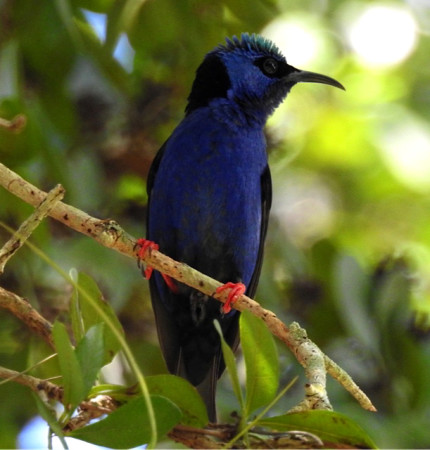
Monday morning we loaded on to our comfortable, air-conditioned bus with Atila, and picked up our bird guide extraordinaire, Maydiel Cañizares Morera, who works for Zapata Swamp National Park. We headed off for Playa Larga in the Bay of Pigs (Bahía de Cochinos) and settled in to our little bungalow accommodations. That afternoon Maydiel took us to “Zunzuncito House” in Paplite, where our hosts Bernabe and Juanita, introduced us to their frequent visitors, the Bee Hummingbirds. The smallest bird in the world – what a treat! There we also saw the Cuban Oriole, the Cuban Emeralds, West Indian Woodpecker, and the ever-present Cuban Blackbirds and House Sparrows.
Our next stop was the forests and savannahs of Soplillar. Despite threatening rain clouds and thick swarms of mosquitos, we intrepidly followed Maydiel, binoculars and cameras at the ready. We were delighted with seeing the Gray-fronted Quail-Dove, the Bare-legged Owl, the Cuban Pygmy-Owl, the Cuban Trogan, the Cuban Tody, the Cuban Green Woodpecker, and the illusive Fernandina’s Flicker. Seeing seven Cuban endemics in one afternoon reflects on Maydiel’s knowledge and skill as a guide. He’s brilliant! This was just day one of birding with Maydiel.
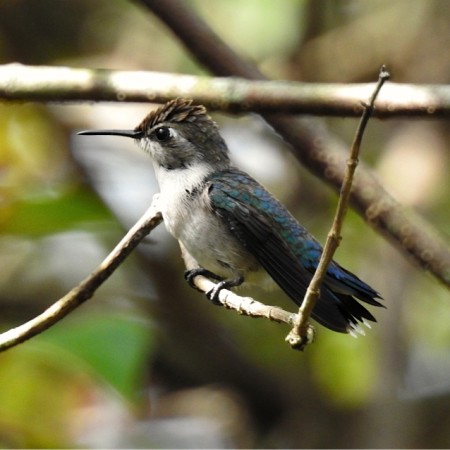
Tuesday morning, ah, Tuesday morning. Our bus took us to the Cocorilla Canals in Santo Tomás, a saw-grass filled swampy area of Zapata. This small hamlet sits back off the grid of power and telephone lines, and it was here that we met the boatmen that would glide us through the swamp. As we drove up to the small cluster of homes, Maydiel commented, “There’s been a lot of rain, and we have to walk to the boats,” a subtle warning that the trail to our boats would be a wet one. Ha! We were headed to one of only two known locations for the Zapata Wren and one of three locations for the Zapata Sparrow (also known as the Cuban Sparrow) so not a single member of the group hesitated to carry on.
As we trekked through thigh-high water I asked the renowned Bermudian octogenarian conservationist, David Wingate, on his journeys to see a particular bird, how did this experience rate? “Oh, right up there at the top,” he commented, “right up there at the top.” It was worth it, though, as we were serenaded by the Zapata Wren, and spotted three more endemics, the Zapata Sparrow, the Cuban Vireo, the Cuban Bullfinch. In addition, that morning we saw another 31 species, including a Crested Caracara on the ride back to Playa Larga.
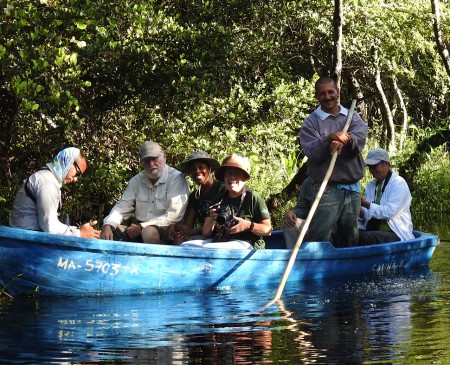
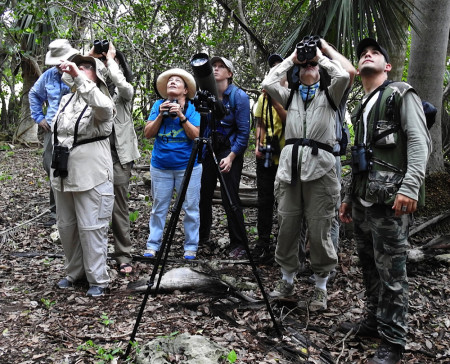
After a casual lunch near the beach, we were bused 18 miles to Sandero Salinas de Brito. Riding and walking the road surrounded on both sides by salt flats, we added the Cuban Black Hawk to our list of endemics. We also had the pleasure of seeing about 800 American Flamingos, a Stygian Owl, Osprey, Reddish Egrets, a white morph Great Blue Heron, White Ibis, a Snowy Egret, and a lone Roseate Spoonbill – 25 species in all that afternoon. I especially enjoyed watching the hundreds of land crabs scuttling out of the way of our bus as we headed back to Playa Larga.
After our final dinner at Playa Larga, we packed for an early departure in search of the Blue-headed Quail-Dove in the Refugio de Fauna Bermejas. Despite a long quiet walk through the forest we had no luck with the Quail-Doves. Though many in our group had previously seen this bird, it was my first good look at the endemic Yellow-headed Warbler. We saw and heard 14 species on that walk, and long will I remember the sound of the Cuban Trogan echoing through woods, a haunting, whooping call from Cuban’s national bird.
Since we were early for lunch at Caleta Buena, we birdwatched and idled on the beach, swam in the rock formation pools, and sipped drinks in the shade of palm trees while Cave Swallows swooped overhead. We spotted the singular Laughing Gull seen on the trip. After a generous buffet lunch, we continued with our slow, steady climb up to Topes de Collantes for the BirdCaribbean 2017 conference.
What a memorable birding experience! Seventeen amazing, talented dedicated birders sharing and enjoying our four-day trip through the lush, green Cuban countryside. The trip was well-organized, and our tour guide Atila was thoughtful and informative. Food was plentiful and for me, that cold Cristal cerveza provided with our meals hit the spot! Our birding guide, Maydiel, made finding so many endemics look easy, a reflection of his knowledge of his country and its birds. We learned about Cuba, the history, the habitats and the birds. I think I speak for all of the participants when we tumbled in to our hotels in Topes de Collantes, we were blown away with our four-day pre-conference birding experience and it will be a cherished memory of a lifetime.
Please scroll over or click on the photos below for captions.
By Martha Cartwright. Martha is a U.S. citizen who has lived in Freeport, Bahamas for 31 years. After becoming a widow in 2013 she started feeding and studying the fish in her canal. One day she looked up and noticed the birds and hasn’t looked down since. She counts her blessings for the tutelage of eBird’s Erika Gates and for a dedicated birding community on Grand Bahama. She teaches yoga and postural alignment therapy when she isn’t birding.
For more fun articles on the BirdsCaribbean 21st International Conference in Cuba, July 2017, check out the following:
Commitment to Conservation (and Adventure) Create an Unforgettable BirdsCaribbean Conference
Coffee, Cave, and a Shot of Expresso
BirdsCaribbean Cuba Conference Connects Scientists and Promotes Conservation
David Wingate Honoured with Lifetime Achievement Award
BirdsCaribbean Conference in Cuba to Highlight Tourism, Technology and More
Exciting Speakers Lined Up for BirdsCaribbean’s 21st International Conference in Cuba

























